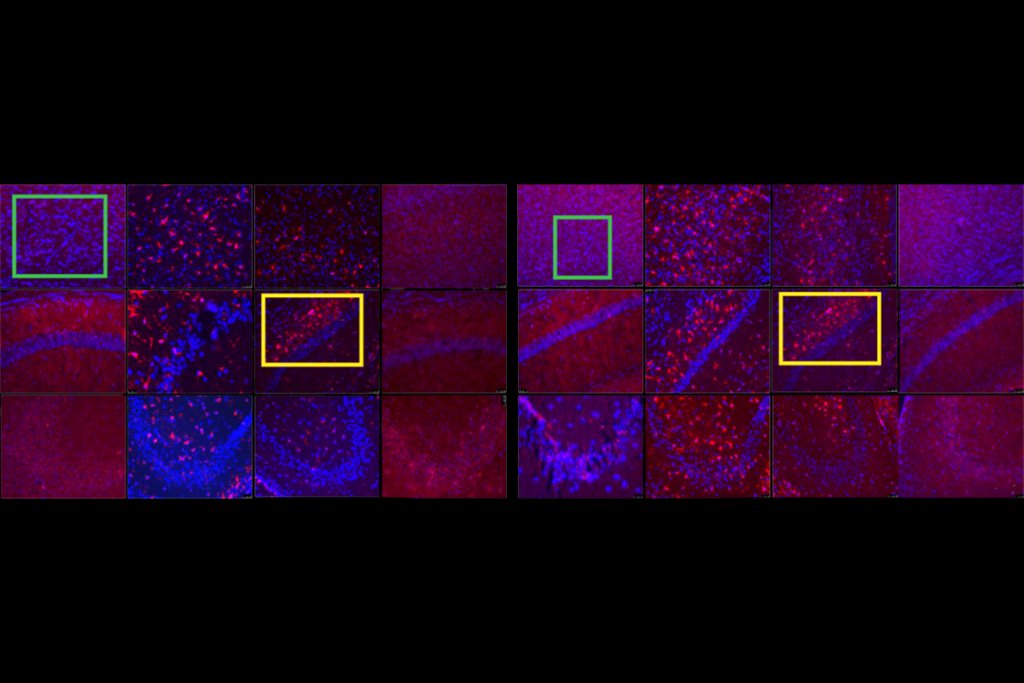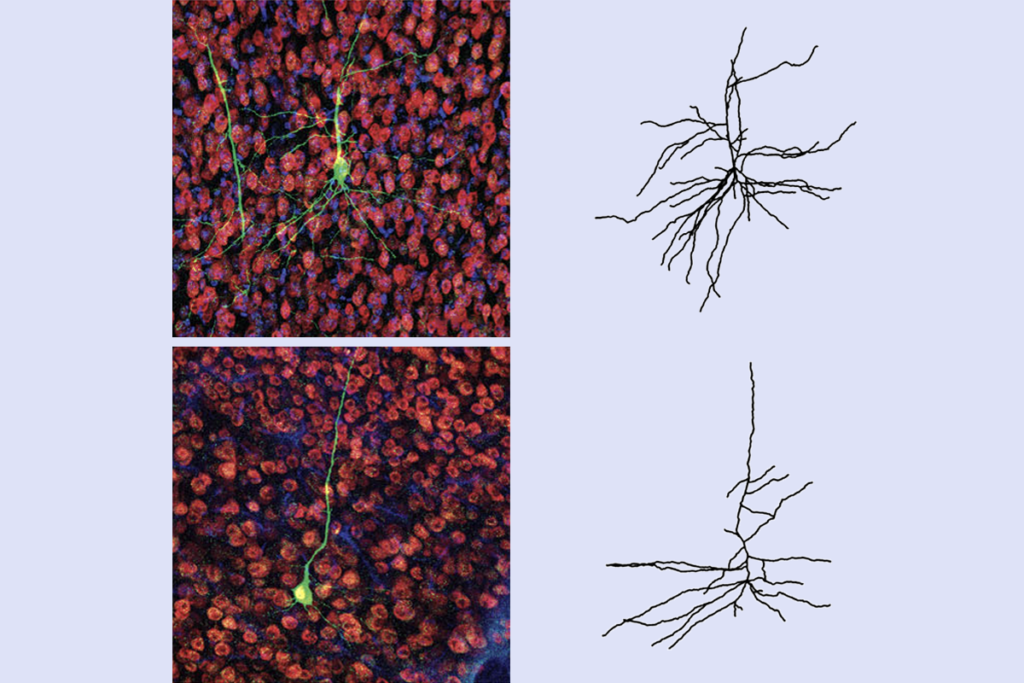Brains of toddlers with autism out of sync
Many toddlers with autism have weak connections between the two sides of the brain, according to the first-ever analysis of brain connections in young children with the disorder, published 23 June in Neuron.
Many toddlers with autism have weak connections between the two sides of the brain, researchers report in the first-ever analysis of brain connections in young children with the disorder. The finding, published 23 June in Neuron1, suggests that autism may be caused by this out-of-sync brain activity.
In healthy individuals, corresponding areas of the brain, one in each hemisphere, activate simultaneously — like two linked light bulbs that grow dimmer and brighter at the same time. Studies have shown that this synchronization is weak in teenagers and adults with autism, and may contribute to symptoms of the disorder2,3, but this is the first time the phenomenon has been investigated in young children.
“There’s been this hypothesis that autism is a disorder of reduced synchronization — that brain areas have less effective communication between them,” says lead investigator Ilan Dinstein, a neurobiologist at the Weizmann Institute of Science in Israel.
In the new study, researchers examined this phenomenon in the brains of 29 toddlers with autism, 13 with language delay and 30 typically developing controls, all between the ages of 1 and 3 and a half. They recorded the toddlers’ brain activity with functional magnetic resonance imaging (fMRI) scans while they slept.
Brain activity remains synchronized even during rest, and scanning during natural sleep makes it easier to compare brain function, researchers say.
The team focused on two brain regions associated with language and communication: the inferior frontal gyrus and the superior temporal gyrus. They found that these regions, each with corresponding locations in the left and right hemisphere, are out of sync in toddlers with autism compared with either typically developing or language-delayed toddlers.
The study “points to [autism] being a real neurodevelopmental disorder — that these are developmental neurobiology problems that are arising before the symptoms emerge,” says Pat Levitt, director of the Zilkha Neurogenetic Institute at the University of Southern California, who was not involved with the work. “This isn’t trivial.”
The finding also supports the ‘cortical connectivity’ hypothesis of autism, which holds that autism is the result of disrupted communication between brain regions in the cortex, the part of the brain associated with higher functions such as thought and emotion. “The convergent evidence is overwhelming that brain connectivity in autism isn’t normal,” says Janet Lainhart, associate professor of psychiatry and pediatrics at the University of Utah, who was not involved in the research. “This paper adds evidence in an age group younger than has ever before been demonstrated.”
The research is an important contribution to the connectivity hypothesis, adds Nancy Minshew a leading proponent of the connectivity theory, who was not involved in the study.
“This is a significant advance in extending the evidence for alterations in functional connectivity to toddlers with autism,” she says. “It is consistent with our other data.”
Early signs:
Because previous studies focused on teenagers or adults, there has been little information about how early these impaired connections manifest, and whether they are related to the symptoms of autism.
Critics of the connectivity theory point to this lack of evidence in young children with autism, and suggest that impaired brain communication observed in adults with the disorder could be a symptom that shows up later in life, rather than a cause.
Out of sync:
The brains of people with autism show weak synchronization between the left and right superior temporal gyrus.
The new study was designed to look for evidence of impaired brain connectivity in very young toddlers, says Dinstein. “No one has ever looked at this age group, which is difficult to do experiments with,” he says.
In their study, Dinstein and his colleagues included toddlers with language delay as well as typically developing controls. They found that the weak connectivity is unique to autism and not shared by the toddlers with language delay. What’s more, they found that the weaker the synchronization between brain areas, the worse a toddler’s communication and language issues are.
Exactly what causes the impaired synchronization is still unclear. Some studies have suggested that in those with autism, projections from neurons do not grow in the right directions to make solid bridges between the two hemispheres of the brain, says Minshew. Alternatively, synapses, the sites at which messages are passed from one neuron to another, may not form or function correctly.
Based on their findings, Dinstein and colleagues used the fMRI scans to successfully predict whether a toddler has autism with 84 percent accuracy. Connectivity in the brains of sleeping toddlers could serve as a biomarker for autism, says Dinstein, although its use as a diagnostic tool is years away.
Imaging benchmarks such as impaired connectivity may be most helpful when used in combination with classical behavioral evaluations to better diagnose autism.
“The two together give you much, much more information about the disorder and how to treat that specific child,” says Lainhart, who last year published results suggesting the structure of white matter as a potential biomarker for autism4. “It adds tremendously to our understanding.”
References:
Recommended reading

Four autism subtypes map onto distinct genes, traits

Perspectives from the field: Opinions in autism research
Explore more from The Transmitter

Quantifying funding sources across neuroscience labs

What kinds of support do early-career researchers need?

